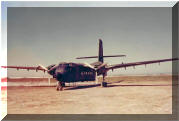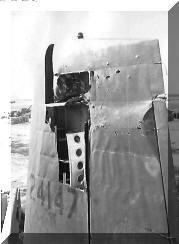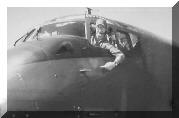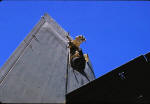US
ARMY SECURITY AGENCY CARIBOU OPERATIONS
New data in
red - updated
November 2, 2019
PATHFINDER
Kenneth E. McNamara provided the following information on his PATHFINDER aircraft
|
I was a
Direction-Finding (DF) operator on the PATHFINDER Caribou RCV-2B,
Tail No. 62-4147 assigned to the 509th Army Security Agency (ASA),
146th Aviation Battalion, 3rd Radio Research Group in Vietnam from
1966 to 1967. I recall this additional information to what Richard
M. McCarthy described in his account below of the Caribou's battle
damage, as follows.
On Sept. 20, 1966, our
PATHFINDER Caribou 62-4147 was performing an intelligence intercept
operation over North Vietnam, slightly north of the DMZ, at about
5,000 ft. altitude when we started to take ground fire from an NVA
gun emplacement situated on a 2,000 ft. mountain. From my DF
station I looked out the window and saw tracers coming up from the
ground between me and the wingtip; I knew that usually meant a
tracer every fifth round, so there were a lot of machinegun rounds
coming our way. A 37mm anti-aircraft hit our tail; the pilot
immediately banked towards the DMZ, was able to skillfully turn the
plane without rudder function compensating by alternating the prop
pitch, and then landed all of us safely without any combat injury
on the PSP-runway at
U.S. base Dong Ha,
a few kilometers below the DMZ. Below are
pictures of our Caribou, crew, battle damage, and "wounded heart"
painted on our aircraft by the Crew Chief to indicate battle damage.
|
| These stories and photos are from Dennis Buley's Special Electronic Mission Aircraft Site check out this site it has many stories and photos of other Army aircraft used in area. Thanks Dennis |











